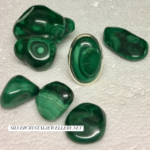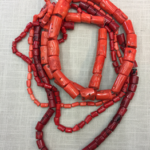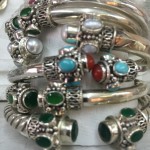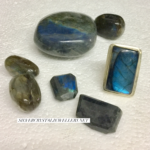Judging custom wedding rings is to a large degree, admittedly, a subjective affair. You either like the look or you don’t.
But when adding in factors of cost, durability and the like, it’s helpful to be aware of some objective criteria used by the pros. You’ll want your personalized ring choice to be a good one. Fine personalized jewelry is not something you want to buy uninformed whether it is a ladies diamond ring or men’s crystal jewellery
WEIGHT
It is often misunderstood that, while diamonds are measured in carats, gold is measured in karats. It’s a measure not of size or weight, but of purity. A 14kt gold ring contains 14/24 pure gold, or about 58%. The purity of platinum (denoted Plat or Pt) is measured on a scale from roughly 900-950 out of 1,000. This translates to a 950PT wedding ring being 95% pure platinum.
Note that the remainder is often comprised of chemically similar though equally valuable metals. While lower numbers can be found, they won’t be found in fine jewelry wedding rings.
A diamond, by contrast, is measured in carats (ct), ranging from near zero and up. 1 carat = 200 mg, a measure of mass. Anything less than about 1/8th of a carat (sometimes 1/4 ct, by some experts) is considered a ‘chip’. Partly, the reason is the difficulty of faceting and polishing such a small stone in order to bring out a diamond’s effects.
Note that technically, a ‘chip’ is any diamond which isn’t fully faceted or properly shaped. They can result from accidents or the crystal structure that makes cutting and polishing nearly impossible. But the smaller the stone, the more difficult this becomes. So, most chips are in the range stated.
The Cullnan diamond, weighing in at about 3106 carats, is the biggest individual gem-quality diamond ever discovered. It was cut down into the egg-shaped stone that sits in the scepter of England, itself about 525 carats.
But there are many other factors that influence the cost and look of a fine diamond intended to sit in an engagement ring or wedding band.
CLARITY
A diamond is judged by professionals on how ‘clear’ it is, and the stone is then placed into a category.
FL, IF Flawless, or Internally Flawless represents the highest grade in this area. Such stones are extremely rare and hence invariably very expensive.
VVS1, VVS2 These ratings represent a diamond which is only ‘very very slightly included’. ‘Included’ means, essentially, occluded or cloudy. Inclusions of non-diamond material or structure are responsible for lack of perfect clarity. These stones are acutally of very high quality despite this rather foreboding word. The flaws can only barely be seen under 10x magnification.
VS1, VS2 Very Slightly Included ratings represent high quality stones. No flaw is visible to the naked eye.
SI1, SI2 Slightly Included gems contains flaws that are visible under 10x magnification and may just barely be seen by those with very sharp eyes. Beyond having good eyesight, though, one needs to know what to look for. Generally, non-experts won’t notice much of anything.
I1, I2, I3 These are mediocre quality stones that may still look very nice. But they have visible flaws when one looks closely that will reduce the brilliance of the stone’s appearance.
COLOR
Beyond the degree of clarity, diamonds – though usually thought of as clear or ‘white’ – can come in any of hundreds of colors. Fashions change and in one era what might be considered a flaw will be highly valued by the next generation. The color is produced by small ‘impurities’ mixed into the carbon structure that makes up diamond.
A 200-carat blue diamond in the Smithsonian (the Hope Diamond), for example, is valued not only for its unusually large size. Its rare and pure color is also a significant factor.
Blue, pink and yellow are among the most common colors found in ring stones.
D stones are completely colorless and correspondingly rare.
E diamonds are also considered colorless. Any impurities are in trace amounts detectable only by experts with special tools. Still very rare.
F are also graded colorless, but a slight color may be seen by an expert.
G-H are near colorless. Non-experts can detect some shading if they look closely, but these can still be high quality diamonds.
I-J Near colorless diamonds in which the color is slightly detectable. Still a very good value.
K-M are stones in which the color is highly noticeable. Observe, though, that these ratings are for diamonds that are ranked according to how little color they have. Hence, a pure yellow diamond may still be thought of as very attractive.
What’s important is to have the color be uniform. Most people still consider even a small spot of color to be a flaw. Of course, that too is simply a matter of taste and some future trendsetter may decide such diamonds are worth even more.
CUT
One factor that is difficult to rank in terms of price or quality is how the stone is cut. This is due to the fact that detemining the "best" cut is really a matter of personal preference. The different cuts – round, oval, square, princess – are all equally beautiful and choice simply depends on personal preference. Other common shapes are the Marquise (a type of elongated stone), the Pear, Emerald cut, Trilliant (a wedge shape), Radiant, Cushion and Heart shaped.
Diamond experts have much more specific criteria and will evaluate the different angles and the facet numbers. The Radiant, for example, has 70 facets while the Trilliant has 25 on the crown and 19 on the pavilion. But these details need not concern wedding ring buyers.



